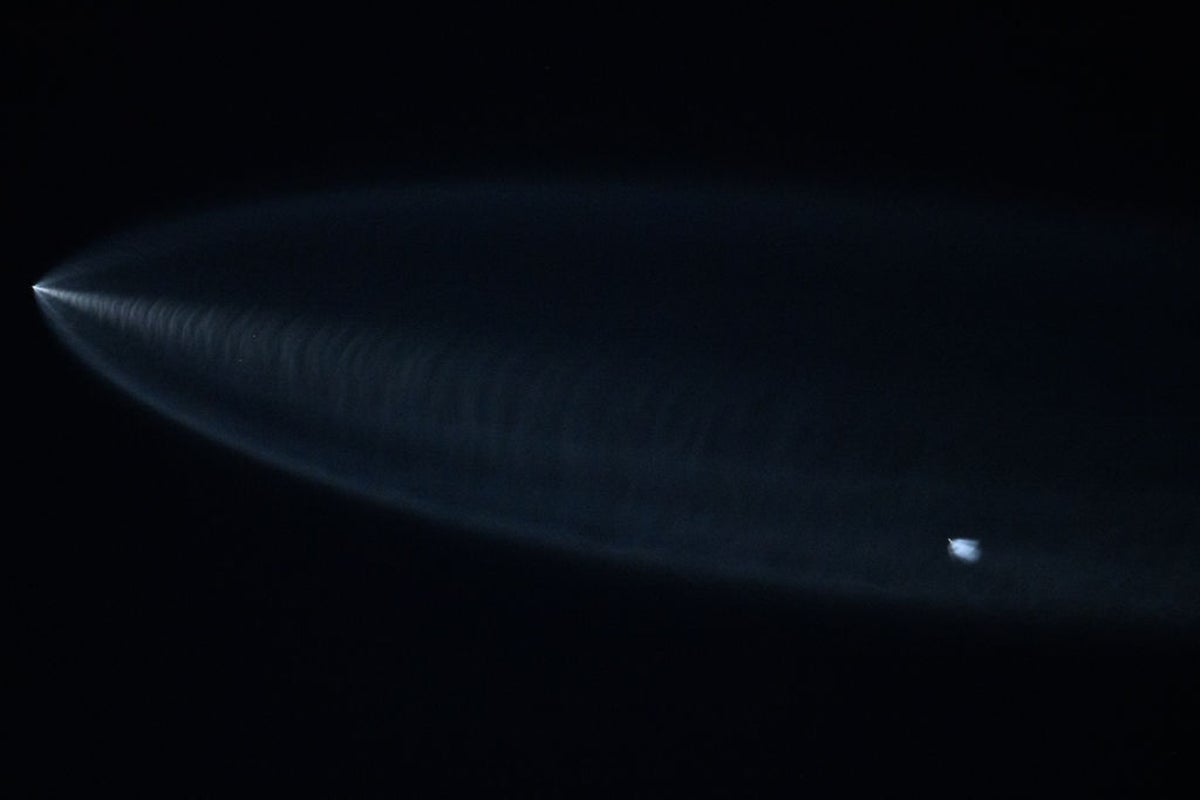Your support helps us to tell the story
From reproductive rights to climate change to Big Tech, The Independent is on the ground when the story is developing. Whether it’s investigating the financials of Elon Musk’s pro-Trump PAC or producing our latest documentary, ‘The A Word’, which shines a light on the American women fighting for reproductive rights, we know how important it is to parse out the facts from the messaging.
At such a critical moment in US history, we need reporters on the ground. Your donation allows us to keep sending journalists to speak to both sides of the story.
The Independent is trusted by Americans across the entire political spectrum. And unlike many other quality news outlets, we choose not to lock Americans out of our reporting and analysis with paywalls. We believe quality journalism should be available to everyone, paid for by those who can afford it.
Your support makes all the difference.Read more
Up to four satellites from Elon Musk’s massive Starlink constellation are falling to Earth every day, according to space trackers.
Jonathan McDowell, an astronomer at the Harvard–Smithsonian Center for Astrophysics in the US, recorded an average of between one to two Starlink satellites deorbiting each day in 2025.
That figure is expected to rise to around five per day as SpaceX continues to grow its space internet constellation.
Videos of Starlink satellites falling to Earth have appeared across social media in recent weeks, causing concern that they could pose a risk to people on the ground.
There are currently around 20,000 objects being tracked in low-Earth orbit, including 12,000 working satellites – 8,500 of which are Starlink satellites.
With a lifespan of around five years, Starlink satellites are purposefully designed to burn up entirely in the Earth’s atmosphere before reaching the ground. So while the events may appear alarming as they streak across the sky, they are not dangerous.
Dr McDowell warned that other objects re-entering could pose a significant threat, as they are not being controlled by their operators.
“Every few months there’s a report of a piece of space hardware that’s reentered that ends up on the ground as a significant piece of debris,“ he said in a recent conversation with space news publication EarthSky.
“So several times a year we’re taking these potshots at people on the Earth and fortunately so far missing. So far we’ve been very lucky, but it won’t last.”
Deorbiting Starlink satellites may not pose a risk to people, but Dr McDowell said they may still prove problematic.
Scientists are still trying to understand what impact this rate of deorbits might have on the Earth’s atmosphere.
Pollutants from the burn-ups, such as aluminium-oxide particles, could contribute to warming of the atmosphere.
“It’s not clear yet really, even in the age of the mega constellations, [whether] these effects are going to be big enough to be really problematic, but it’s not clear that they won’t,” Dr McDowell said.
“That research is underway right now, and if it comes back that we’re already doing damage to the atmosphere in this way, we’re going to have to rethink some of our disposal strategies.”
